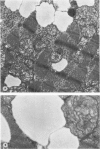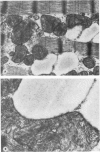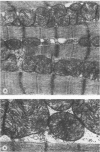Abstract
Cynomolgi (Macaca fascicularis) were fed diets containing 25% rapeseed oil (RSO), partially hydrogenated herring oil (PHHO), or a 3:1 mixture of lard and corn oil as control for 4 months. The RSO contained approximately 25% of the fatty acids as erucic acid; the PHHO contained a similar concentration of mainly cetoleic acid. The control diet did not include such fatty acids. At the time of necropsy, the RSO- and PHHO-fed monkeys showed myocardial and skeletal muscle lipidosis. Foci of mononuclear cell infiltration, although infrequent, occurred in all three groups and were thought to be nonspecific. The only significant intergroup difference in serum biochemical or hematologic parameters was an increase in serum glutamic-oxaloacetic transaminase activity in both RSO and PHHO groups. Ultrastructural studies confirmed the presence of lipidosis in cardiac and skeletal muscle and revealed mild mitochondrial degeneration, causing a depression of the P/O ratio of the RSO group and a State III respiratory rate depression of the PHHO group. The difference in the exposure/life span ratio represented by this experiment may account for the absence of clear intergroup differences such as are reported in rats used in similar studies, but a true species difference in regard to dietary oils containing docosenoic acids has to be considered as well.
Full text
PDF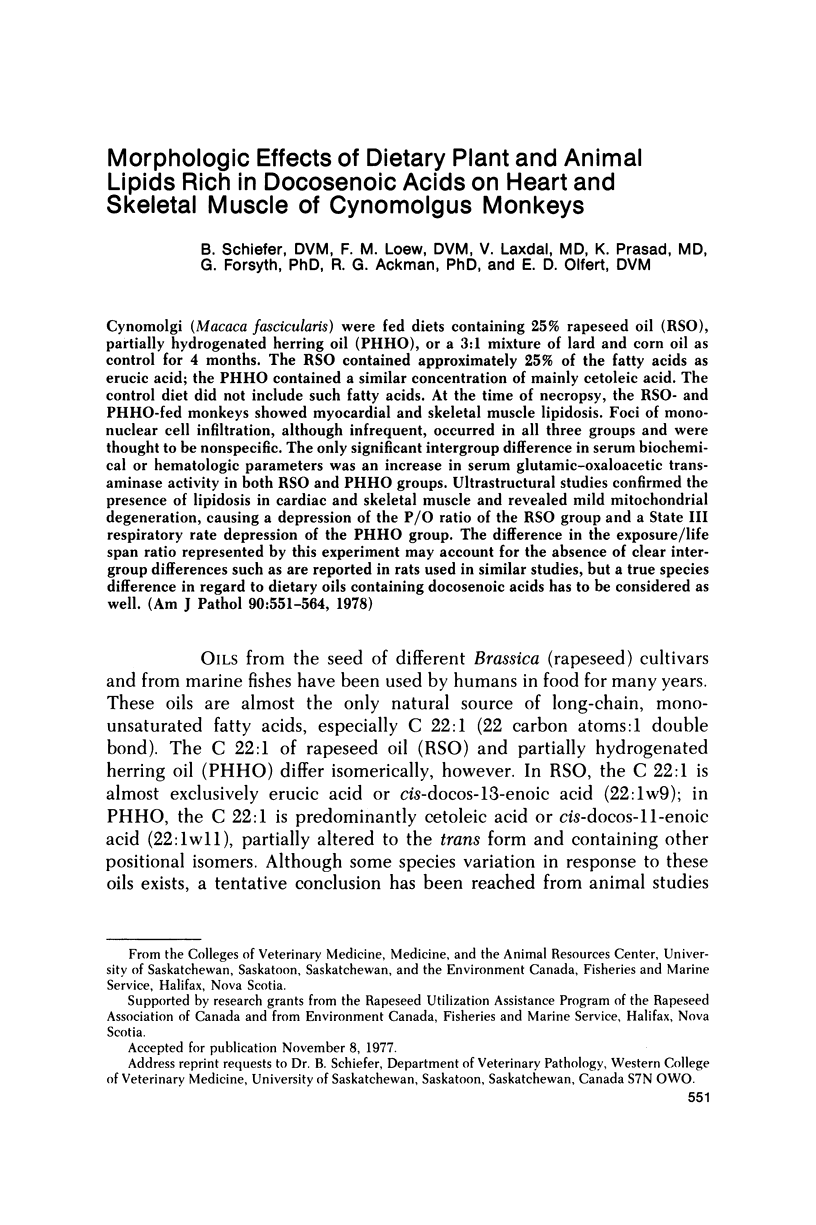
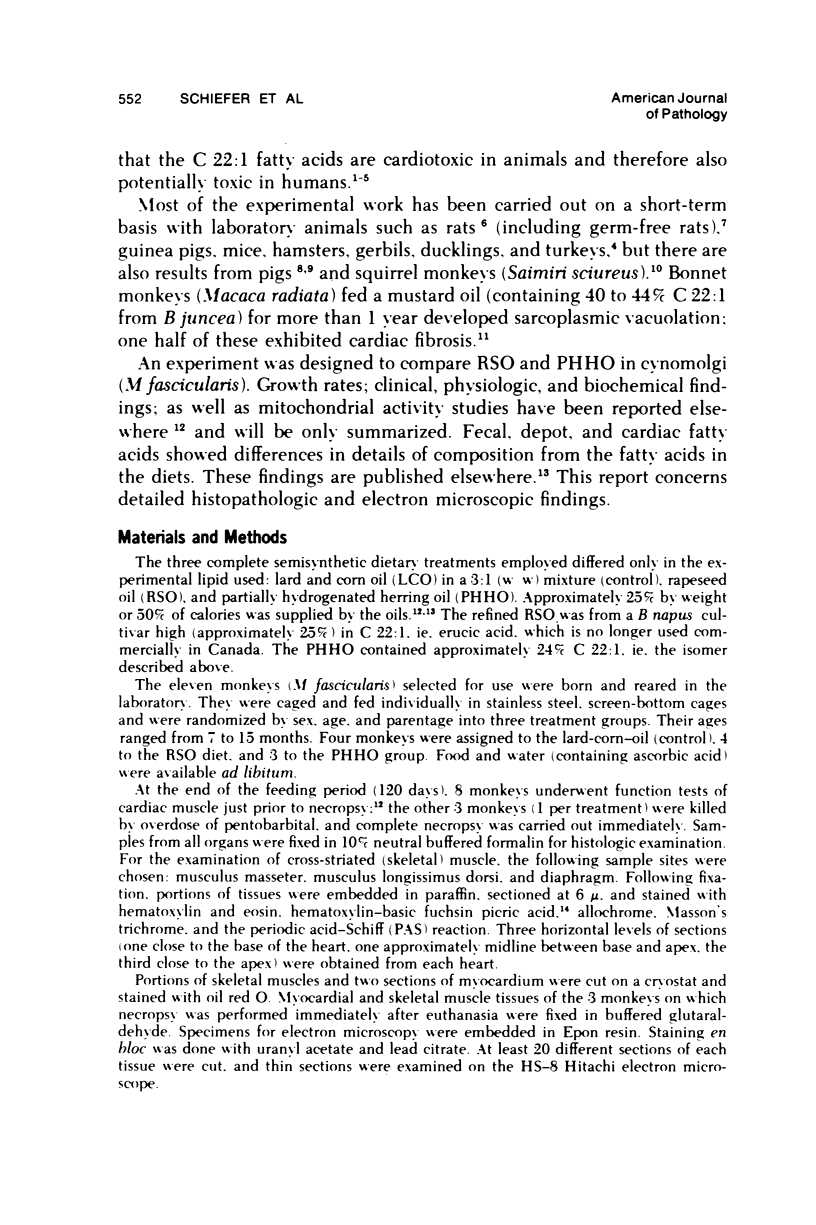
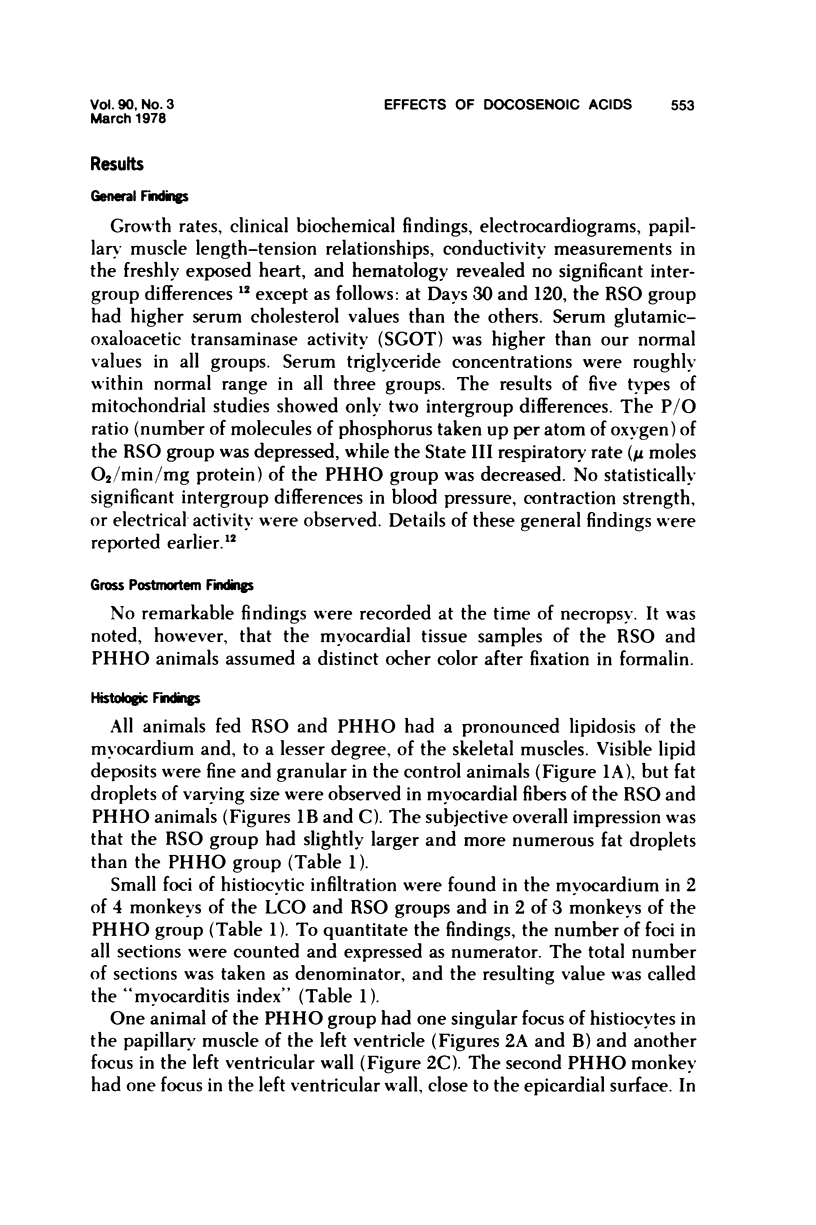
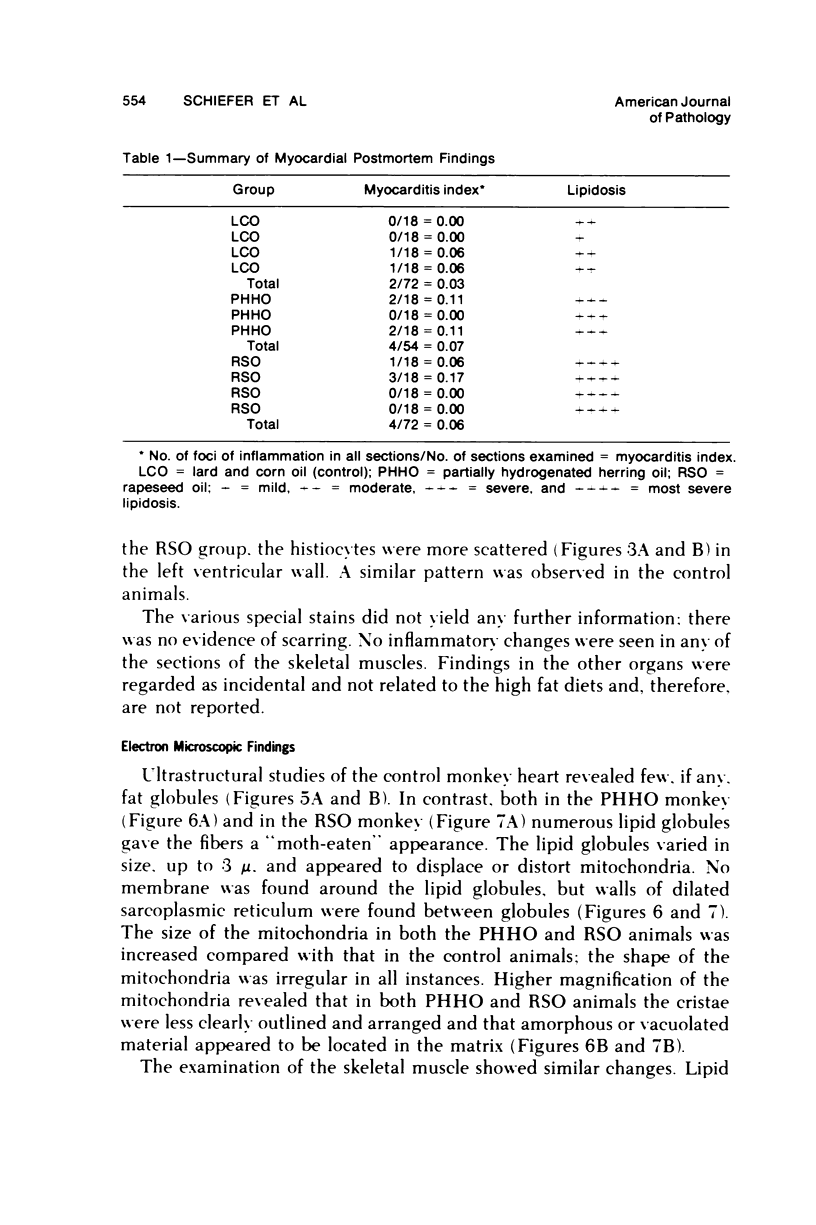

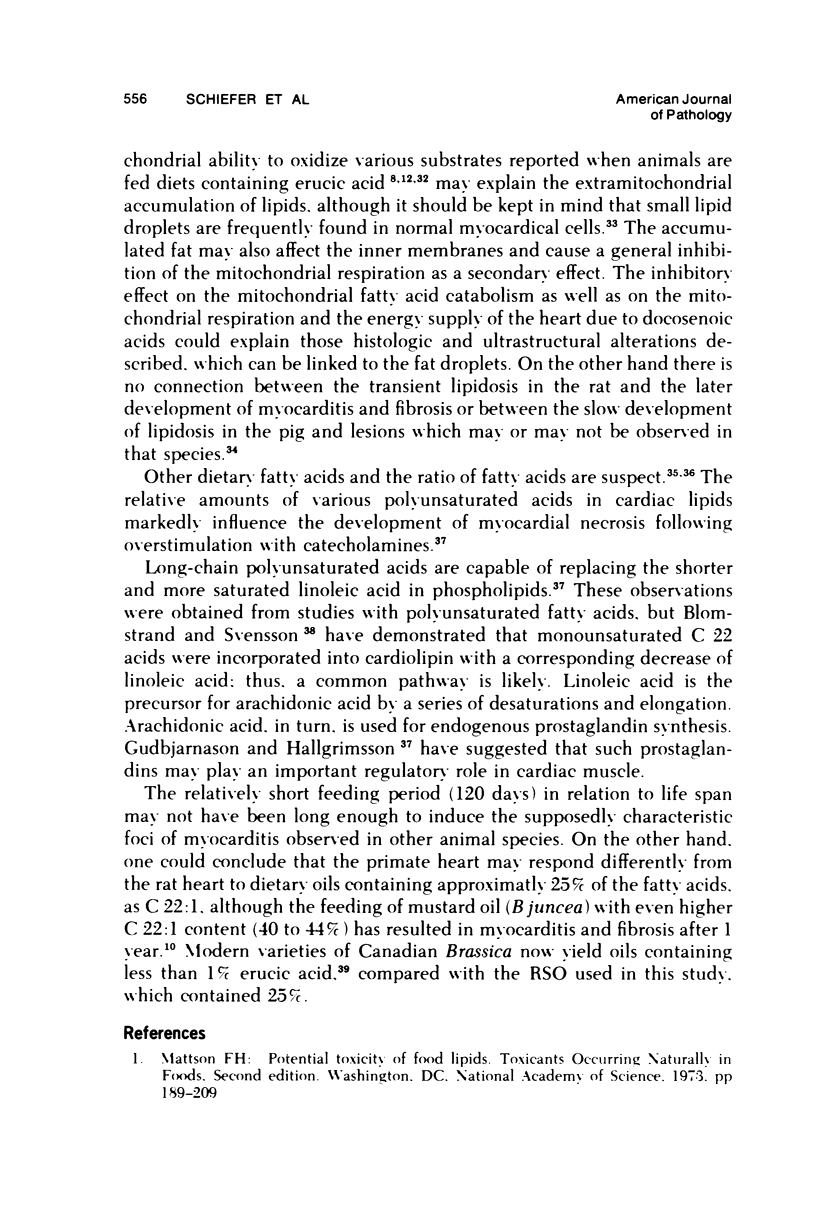
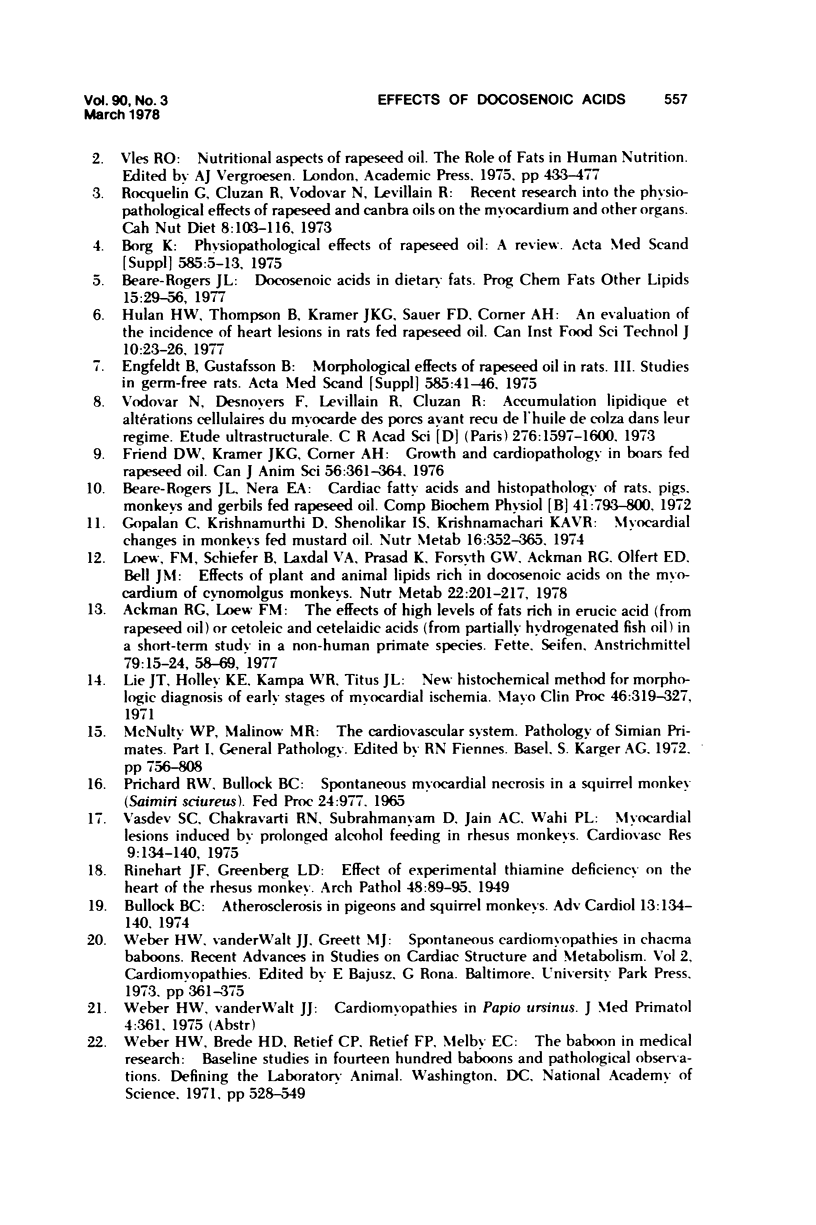
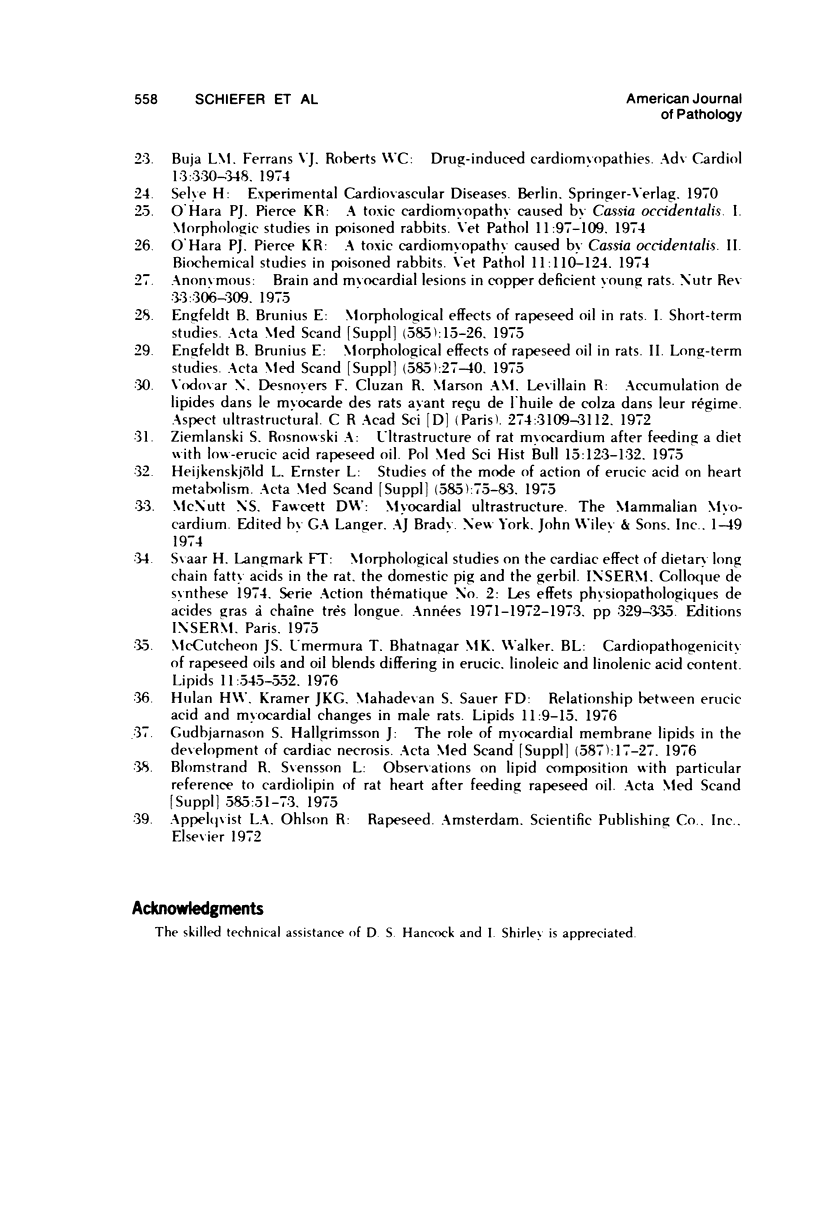
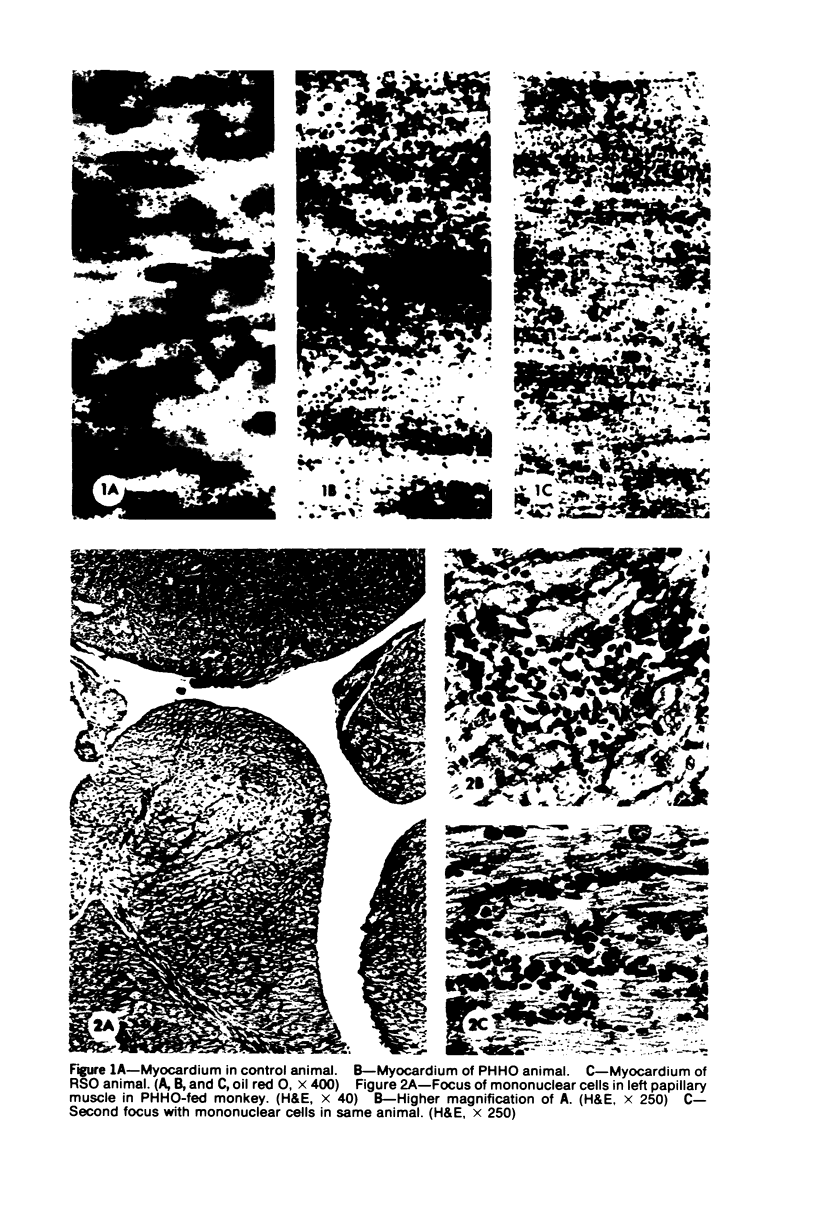
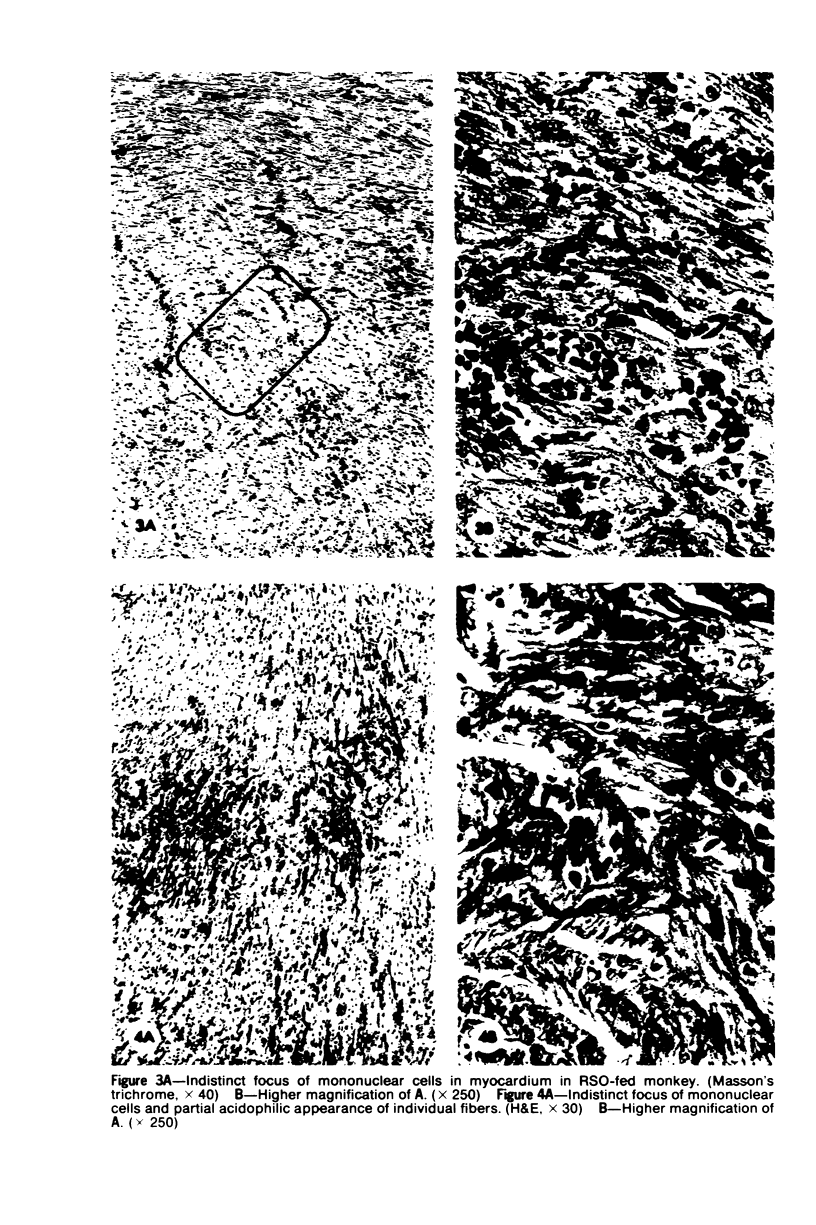
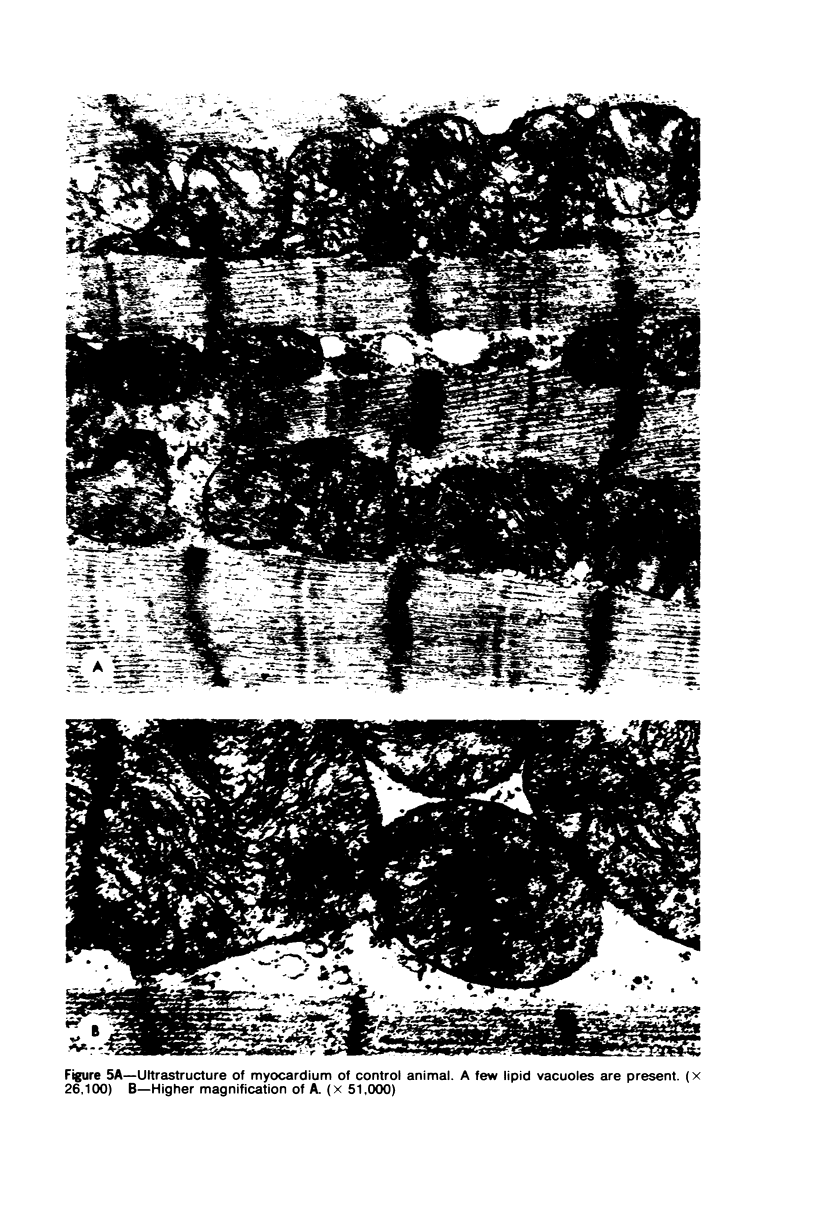
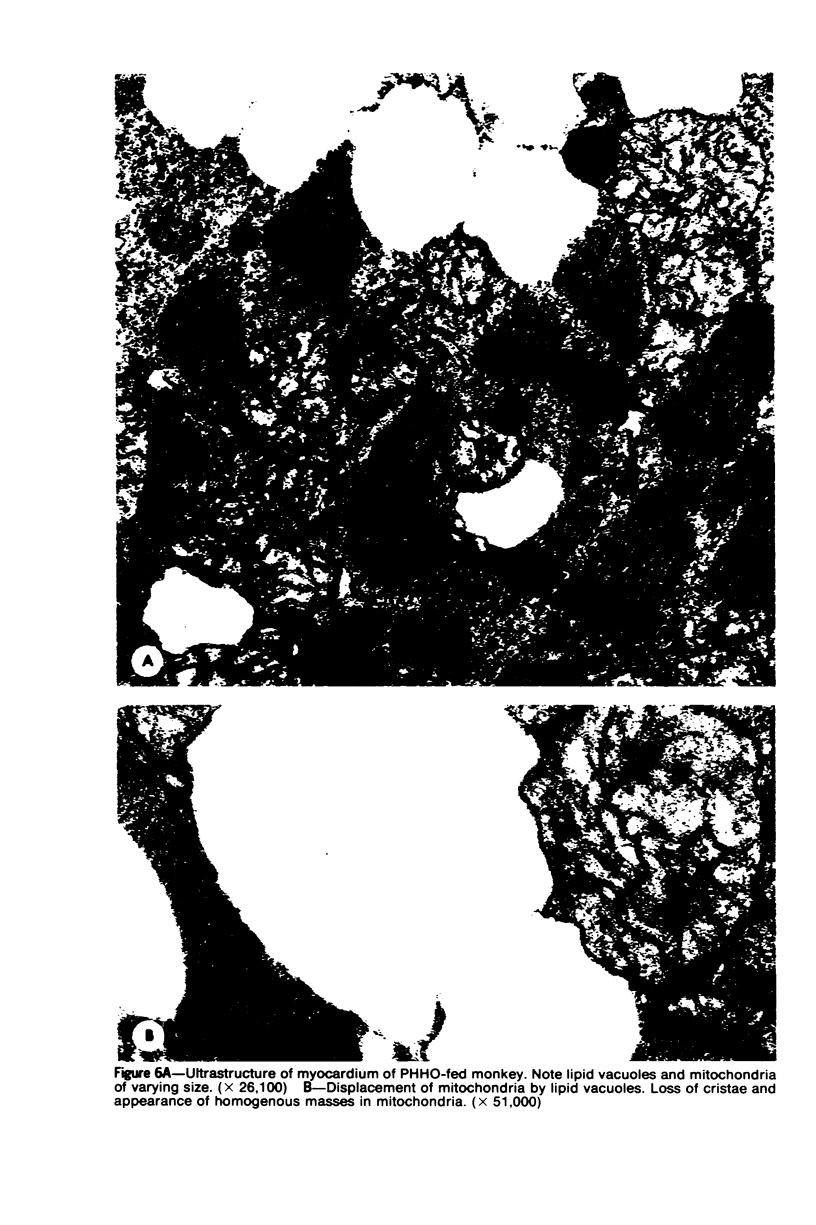
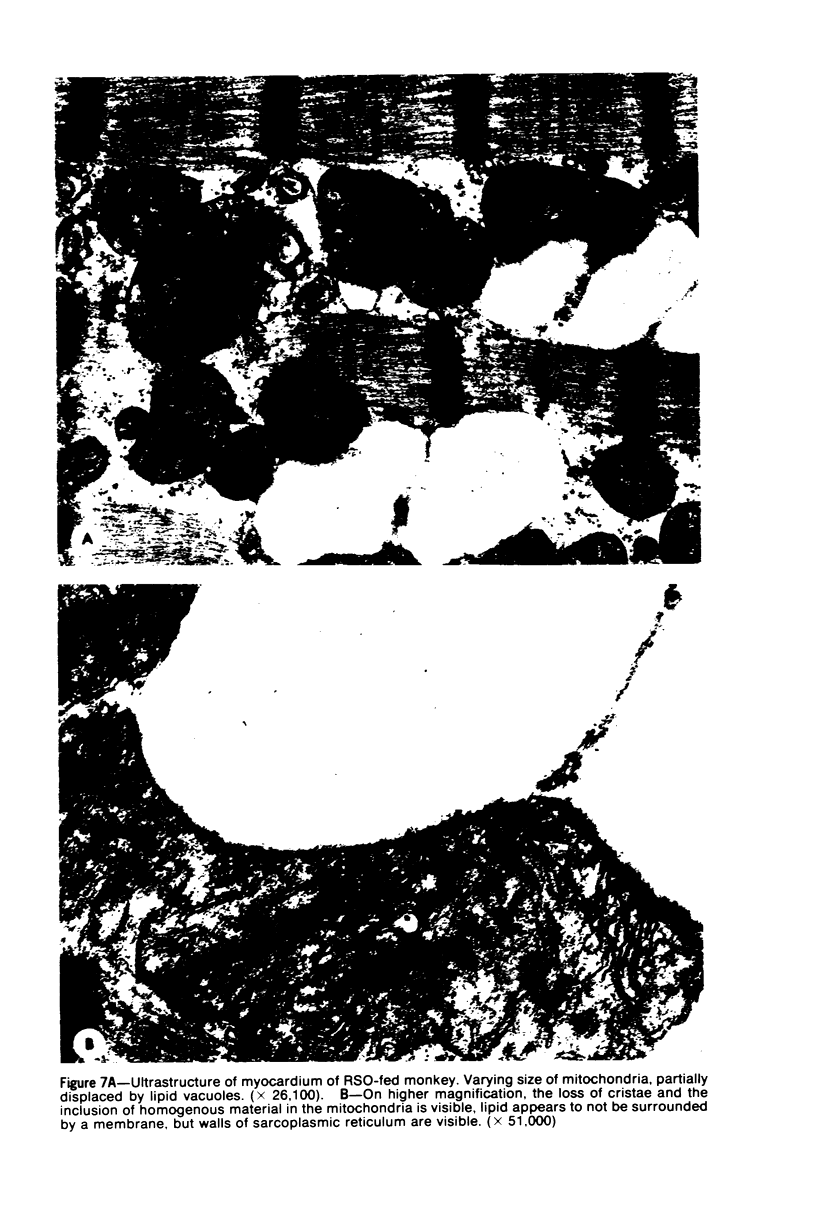
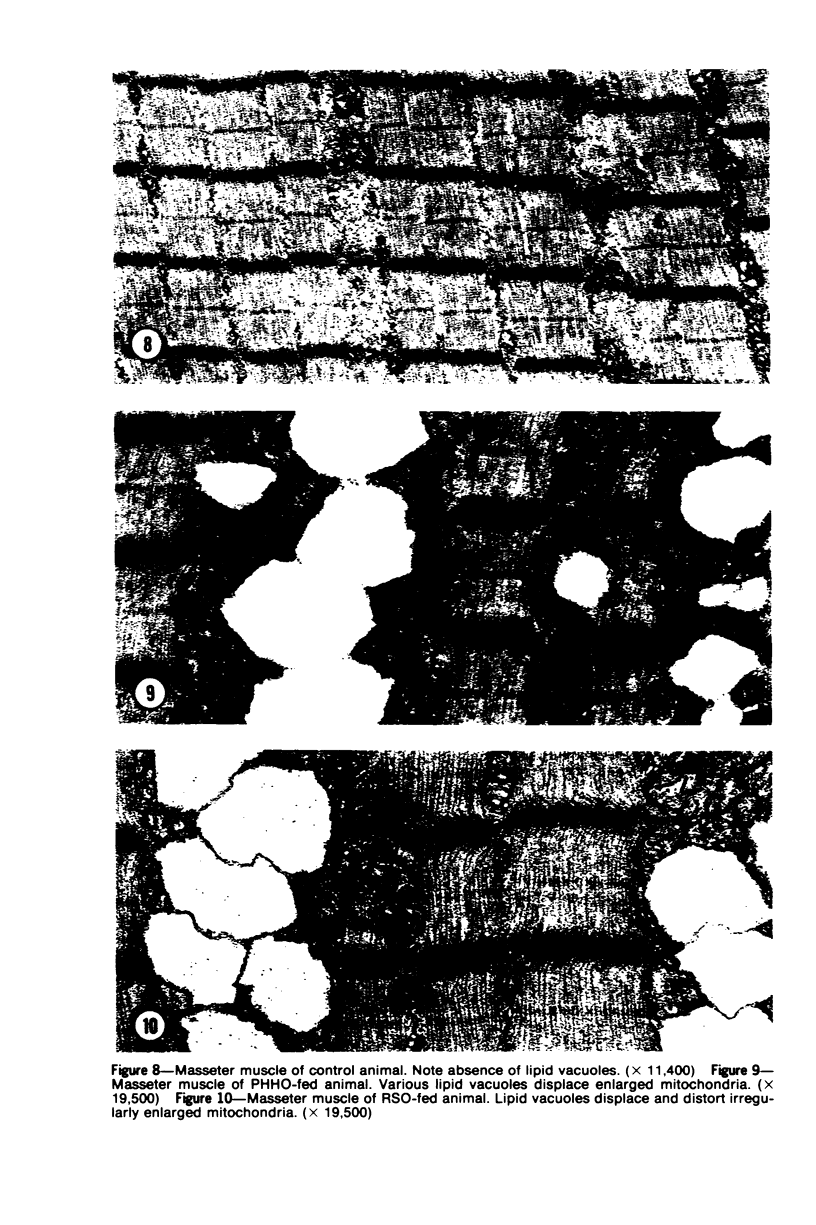
Images in this article
Selected References
These references are in PubMed. This may not be the complete list of references from this article.
- Beare-Rogers J. L. Docosenoic acids in dietary fats. Prog Chem Fats Other Lipids. 1977;15(1):29–56. doi: 10.1016/0079-6832(77)90006-4. [DOI] [PubMed] [Google Scholar]
- Beare-Rogers J. L., Nera E. A. Cardiac fatty acids and histopathology of rats, pigs, monkeys and gerbils fed rapeseed oil. Comp Biochem Physiol B. 1972 Apr 15;41(4):793–800. doi: 10.1016/0305-0491(72)90092-2. [DOI] [PubMed] [Google Scholar]
- Borg K. Physiopathological effects of rapeseed oil: a review. Acta Med Scand Suppl. 1975;585:5–13. doi: 10.1111/j.0954-6820.1975.tb06554.x. [DOI] [PubMed] [Google Scholar]
- Bullock B. C. Atherosclerosis in pigeons and squirrel monkeys. Adv Cardiol. 1974;13:134–140. doi: 10.1159/000395533. [DOI] [PubMed] [Google Scholar]
- Engfeldt B., Brunius E. Morphological effects of rapeseed oil in rats. II. Long-term studies. Acta Med Scand Suppl. 1975;585:27–40. doi: 10.1111/j.0954-6820.1975.tb06556.x. [DOI] [PubMed] [Google Scholar]
- Engfeldt B., Gustafsson B. Morphological effects of rapeseed oil in rats. III. Studies in germ-free rats. Acta Med Scand Suppl. 1975;585:41–46. doi: 10.1111/j.0954-6820.1975.tb06557.x. [DOI] [PubMed] [Google Scholar]
- Gopalan C., Krishnamurthi D., Shenolikar I. S., Krishnamachari K. A. Myocardial changes in monkeys fed mustard oil. Nutr Metab. 1974;16(6):352–365. doi: 10.1159/000175508. [DOI] [PubMed] [Google Scholar]
- Gudbjarnason S., Hallgrimsson J. The role of myocardial membrane lipids in the development of cardiac necrosis. Acta Med Scand Suppl. 1976;587:17–27. doi: 10.1111/j.0954-6820.1976.tb05862.x. [DOI] [PubMed] [Google Scholar]
- Lie J. T., Holley K. E., Kampa W. R., Titus J. L. New histochemical method for morphologic diagnosis of early stages of myocardial ischemia. Mayo Clin Proc. 1971 May;46(5):319–327. [PubMed] [Google Scholar]
- Loew F. M., Schiefer B., Laxdal V. A., Prasad K., Forsyth G. W., Ackman R. G., Olfert E. D., Bell J. M. Effects of plant and animal lipids rich in docosenoic acids on the myocardium of Cynomolgus monkeys. Nutr Metab. 1978;22(4):201–217. doi: 10.1159/000176217. [DOI] [PubMed] [Google Scholar]
- O'Hara P. J., Pierce K. R. A toxic cardiomyopathy caused by Cassia occidentalis. I. Morphologic studies in poisoned rabbits. Vet Pathol. 1974;11(2):97–109. doi: 10.1177/030098587401100201. [DOI] [PubMed] [Google Scholar]
- O'Hara P. J., Pierce K. R. A toxic cardiomyopathy caused by Cassia occidentalis. II. Biochemical studies in poisoned rabbits. Vet Pathol. 1974;11(2):110–124. doi: 10.1177/030098587401100202. [DOI] [PubMed] [Google Scholar]
- Vasdev S. C., Chakravarti R. N., Subrahmanyam D., Jain A. C., Wahi P. L. Myocardial lesions induced by prolonged alcohol feeding in rhesus monkeys. Cardiovasc Res. 1975 Jan;9(1):134–140. doi: 10.1093/cvr/9.1.134. [DOI] [PubMed] [Google Scholar]
- Vodovar N., Desnoyers F., Cluzan R., Marson A. M., Levillain R. Accumulation de lipides dans le myocarde des rats ayant re cu de l'huile de colza dans leur règime. Aspect ultrastructural. C R Acad Sci Hebd Seances Acad Sci D. 1972 Jun 5;274(23):3109–3112. [PubMed] [Google Scholar]
- Weber H. W., Van Der Walt J. J., Greeff M. J. Spontaneous cardiomyopathies in Chacma baboons. Recent Adv Stud Cardiac Struct Metab. 1973;2:361–375. [PubMed] [Google Scholar]



